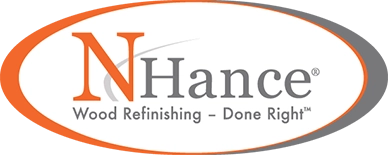When you choose to renew and preserve your wood surfaces with N-Hance instead of replacing them, you can feel good knowing that you are choosing a path of conservation – saving trees, fossil fuels and a reduction in greenhouse gases.
N-Hance Renews, Conserves and Preserves!
Americans use a staggering 27 percent of the wood commercially harvested worldwide. A significant portion of this wood is harvested in an unsustainable manner, making the impact on forest ecosystems that much greater. To minimize this impact and to be environmentally conscious, we need to reduce the amount of new lumber used, reuse wood that has already been harvested, and buy wood that was harvested in an environmentally conscious manner to minimize the impact on the forest ecosystems. N-Hance provides the eco-friendly solution of renewing your existing wood surfaces.
N-Hance is Dust Free
Why is dust-free air important?
Sanding can have serious potential health risks if attention is not paid to safely controlling the dust particles. Sanding dust is particularly dangerous because very fine particle sizes produced by sanding can become permanently trapped in the lungs and potentially result in a variety of unwanted conditions.
How does N-Hance reduce my exposure to indoor dust?
Airborne wood dust is a hazard that you do not have to live with. The N-Hance revolutionary process eliminates most sanding, which simply means no dust. With N-Hance there is no need to cover your furniture or electronics and seal off rooms or vacate for days. Our dust-containment system allows you to breathe easier in your home or office.
N-Hance uses high performance, low VOC water-based polyurethane finishes.
By reducing the Volatile Organic Compounds (VOCs) in our products we reduce the compounds that enter the atmosphere and have been found to be related to the reduction of Ozone. VOC exposures are often associated with an odor and with adverse health effects. Concentrations of VOCs are consistently higher indoors (up to ten times higher) than outdoors. VOCs are emitted by a wide array of products including: paints and lacquers, paint strippers, cleaning supplies, pesticides, and building materials to name a few. Studies indicate that while people are using products containing chemicals and solutions containing VOCs, they can expose themselves and others to very high pollutant levels, and elevated concentrations can persist in the air long after the activity is completed.

